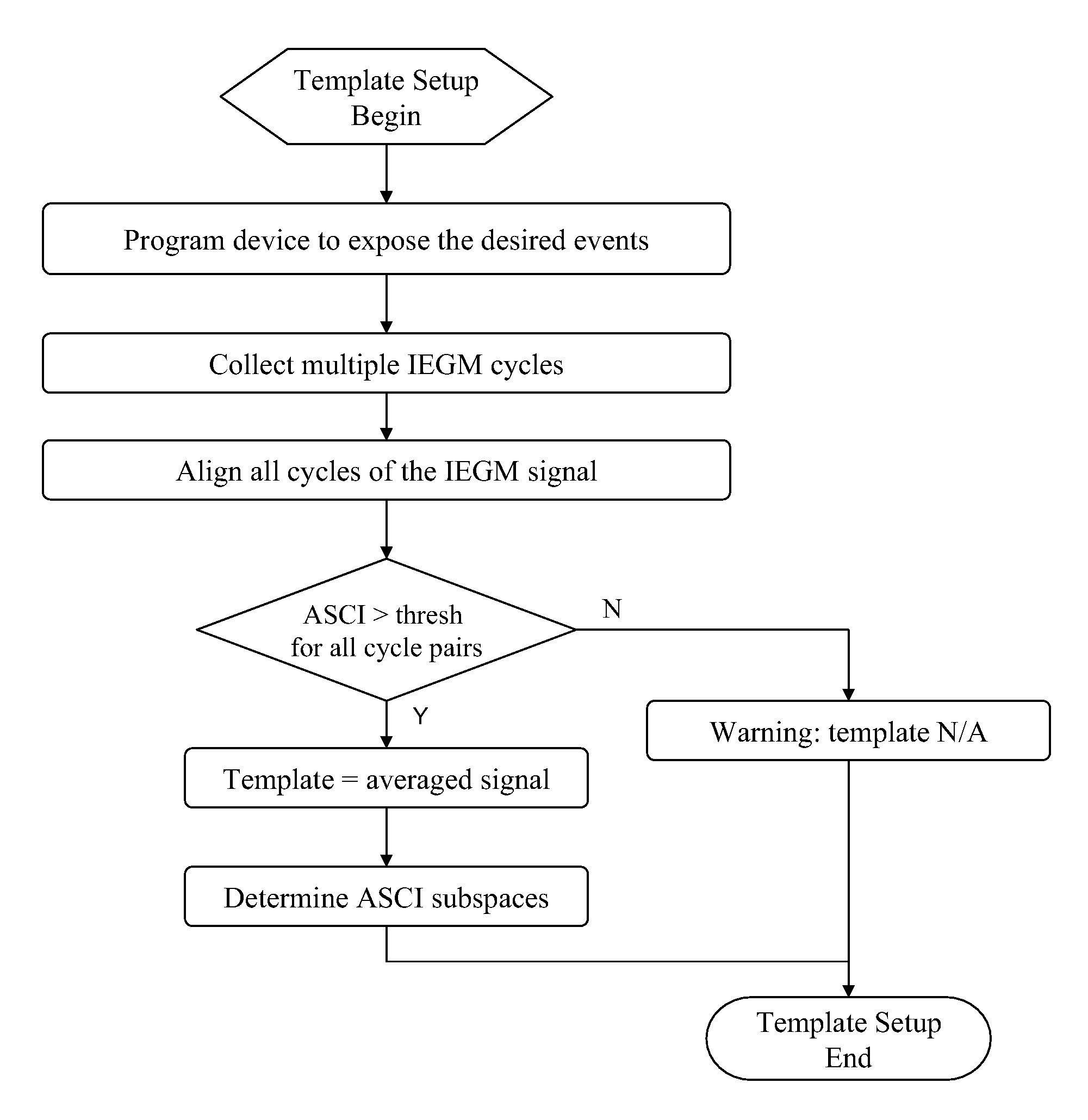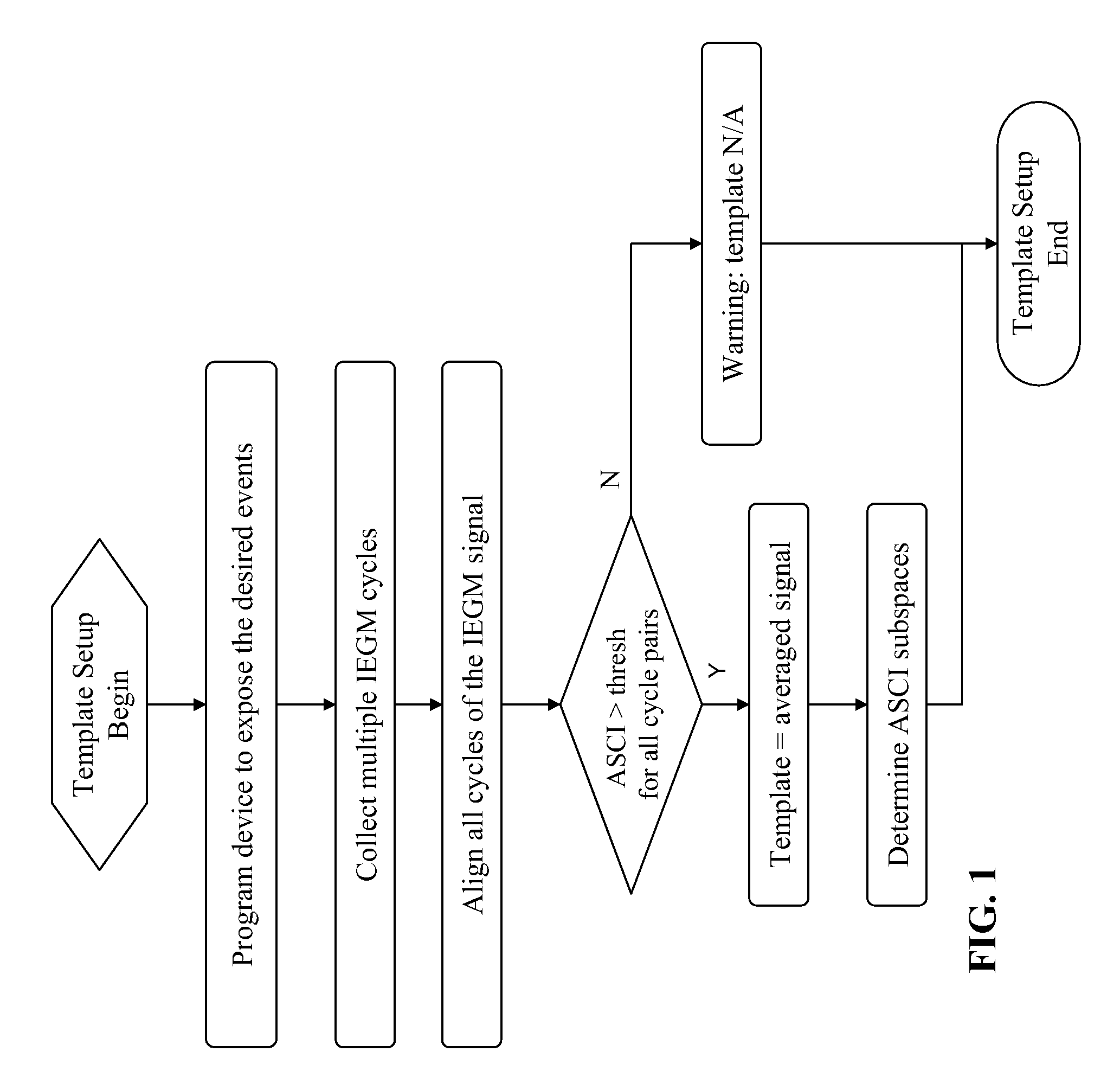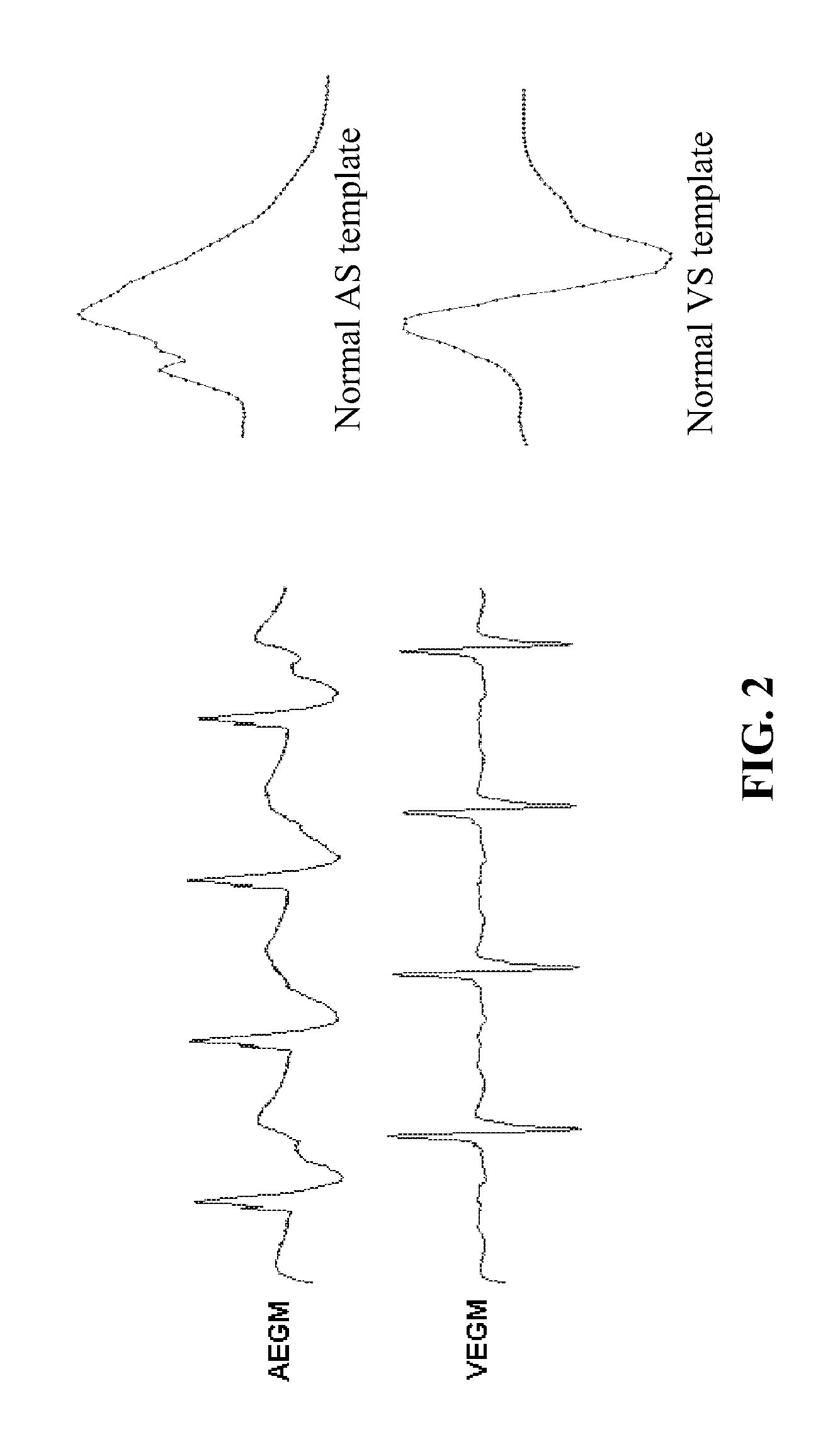Device, method and computer-readable storage medium for enhanced sense event classification in implantable devices by means of morphology analysis
a morphology analysis and event classification technology, applied in the field of implantable cardiac devices, can solve the problems of only using event timing information in the above event classification method, oversensing and undersensing still exist, and achieve the effect of accurately classifying the sensed events
- Summary
- Abstract
- Description
- Claims
- Application Information
AI Technical Summary
Benefits of technology
Problems solved by technology
Method used
Image
Examples
Embodiment Construction
[0118]Construction of Template Waveform
[0119]According to this invention, a normal atrial sense (AS) template waveform is constructed from the atrial electrogram (AEGM) signal that corresponds to normal intrinsic atrial depolarization. For implantable cardiac devices, the normal atrial template waveform can be constructed from the AEGM corresponding to the AS events detected outside the atrial refractory period (ARP). As known in the art, the normal AS events can be exposed by programming the device atrial pacing rate below the sinus rate of the heart.
[0120]Also according to this invention, a normal ventricular sense (VS) template waveform is constructed from the ventricular electrogram (VEGM) signal that corresponds to antegrade conducted ventricular depolarization. For implantable cardiac devices, the normal VS template can be constructed from the VEGM corresponding to VS event that is outside the ventricular refractory period (VRP) and is associated with preceding AS event or atr...
PUM
 Login to View More
Login to View More Abstract
Description
Claims
Application Information
 Login to View More
Login to View More - R&D
- Intellectual Property
- Life Sciences
- Materials
- Tech Scout
- Unparalleled Data Quality
- Higher Quality Content
- 60% Fewer Hallucinations
Browse by: Latest US Patents, China's latest patents, Technical Efficacy Thesaurus, Application Domain, Technology Topic, Popular Technical Reports.
© 2025 PatSnap. All rights reserved.Legal|Privacy policy|Modern Slavery Act Transparency Statement|Sitemap|About US| Contact US: help@patsnap.com



